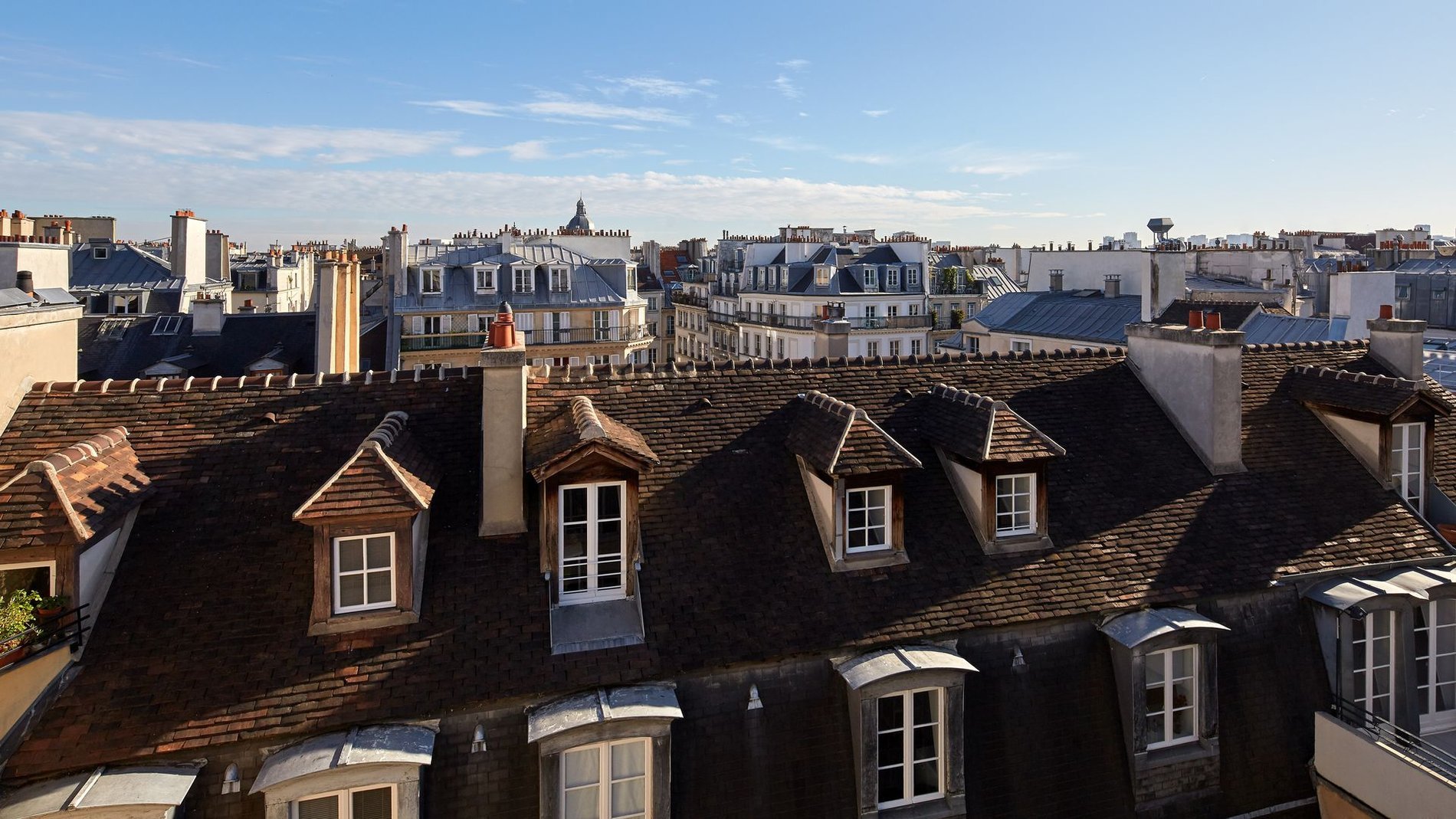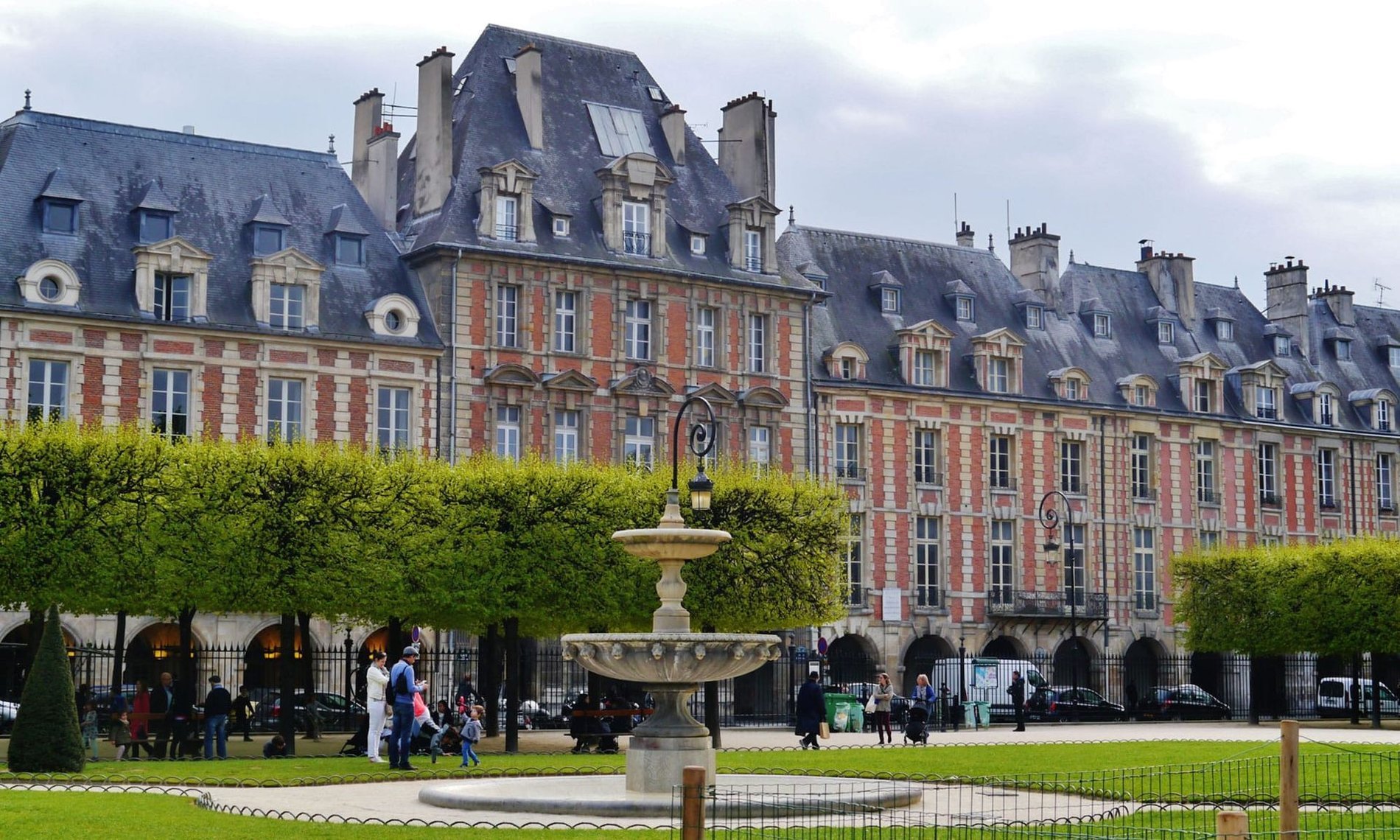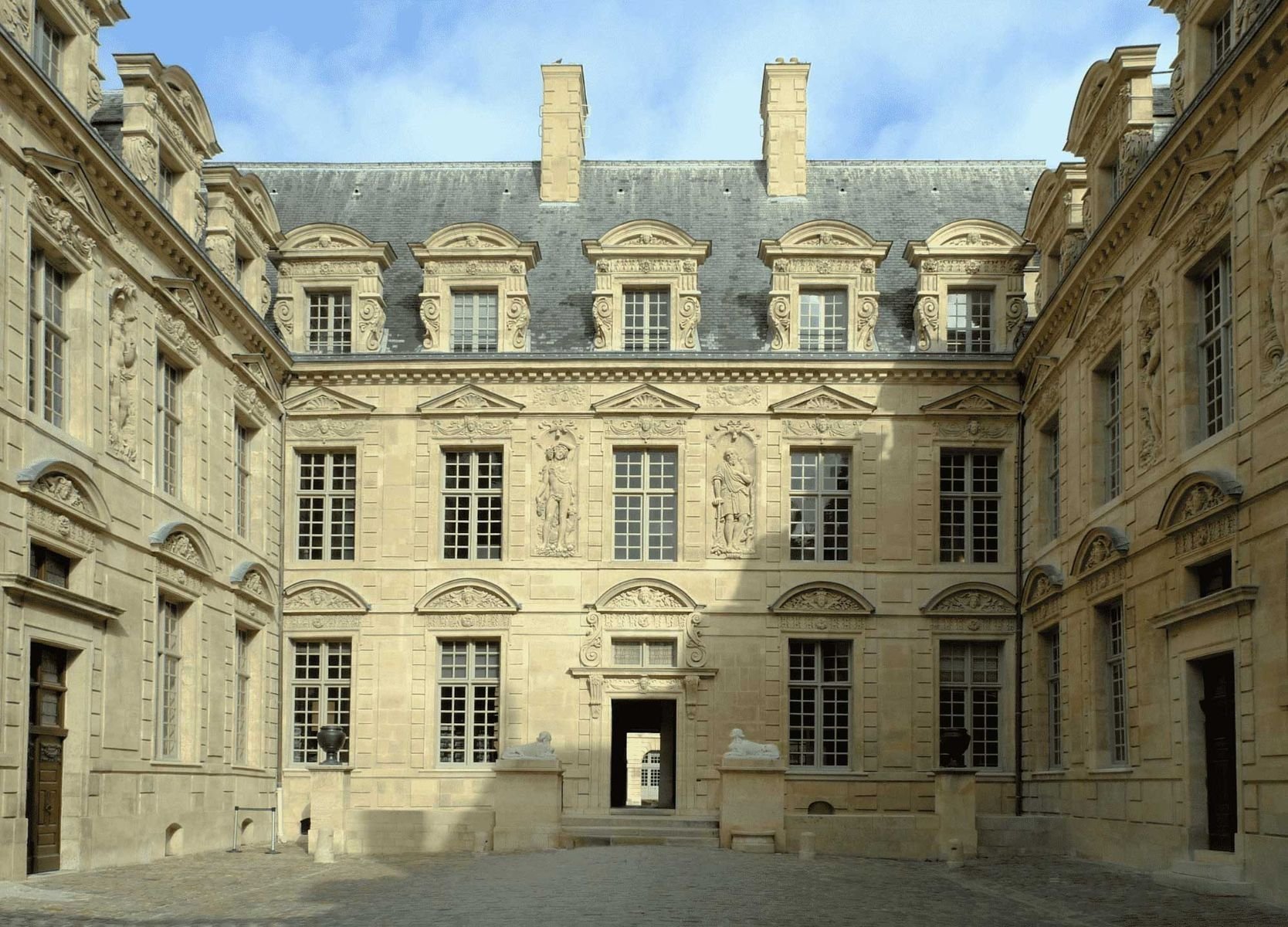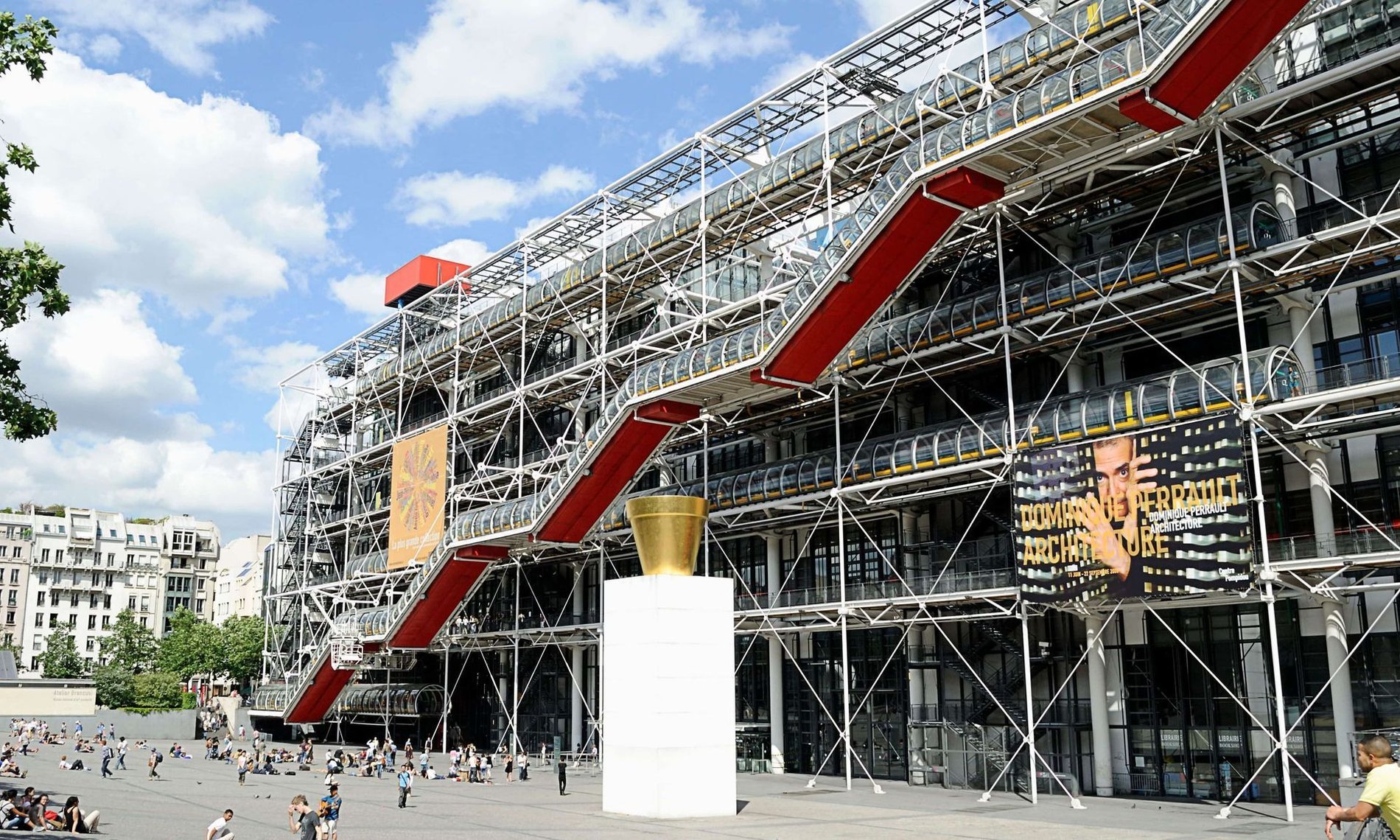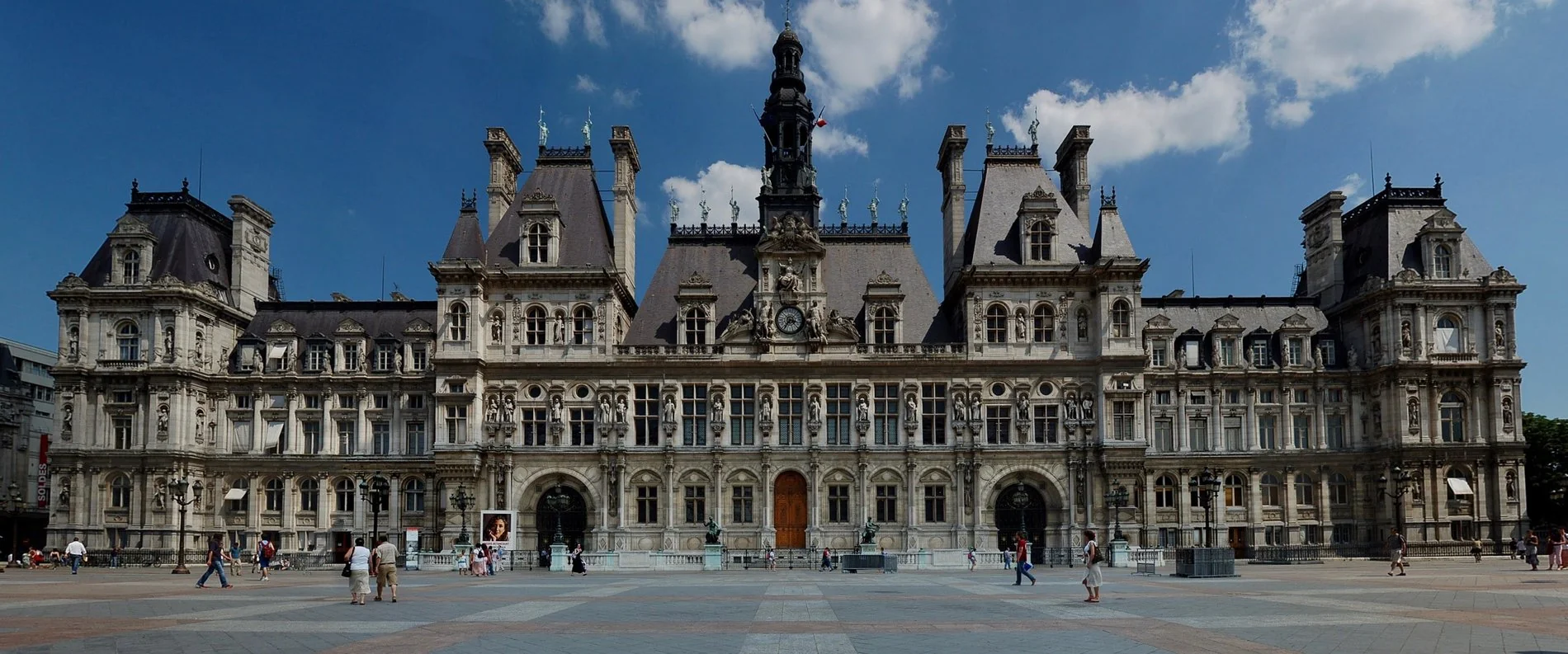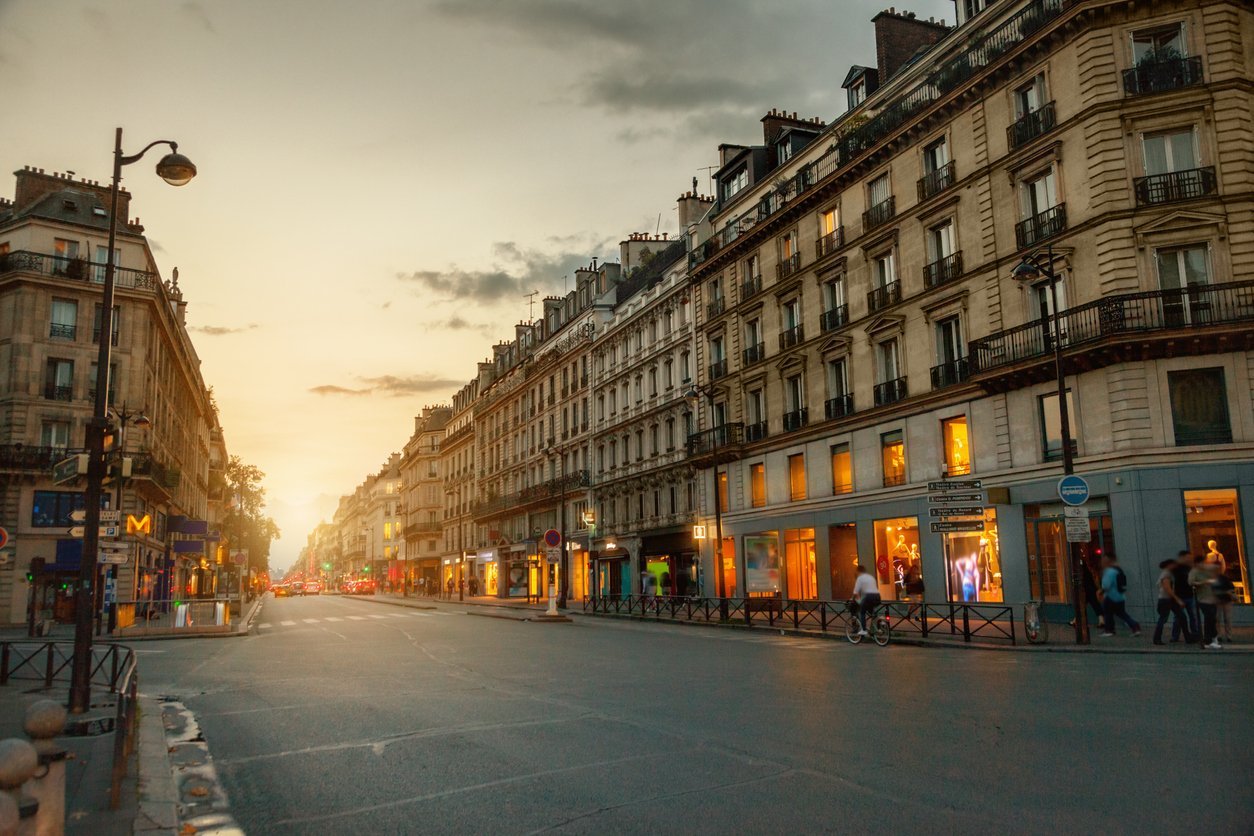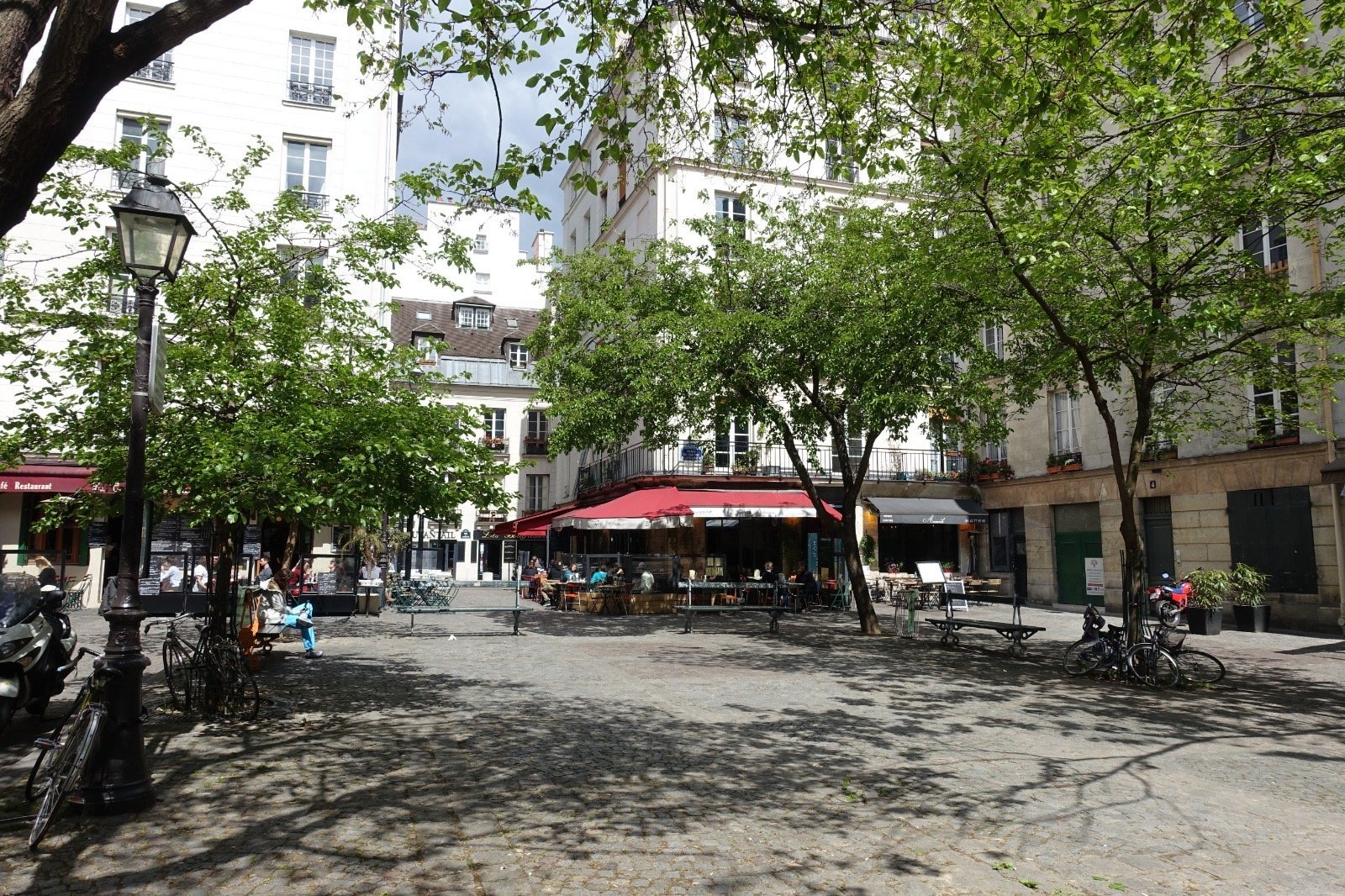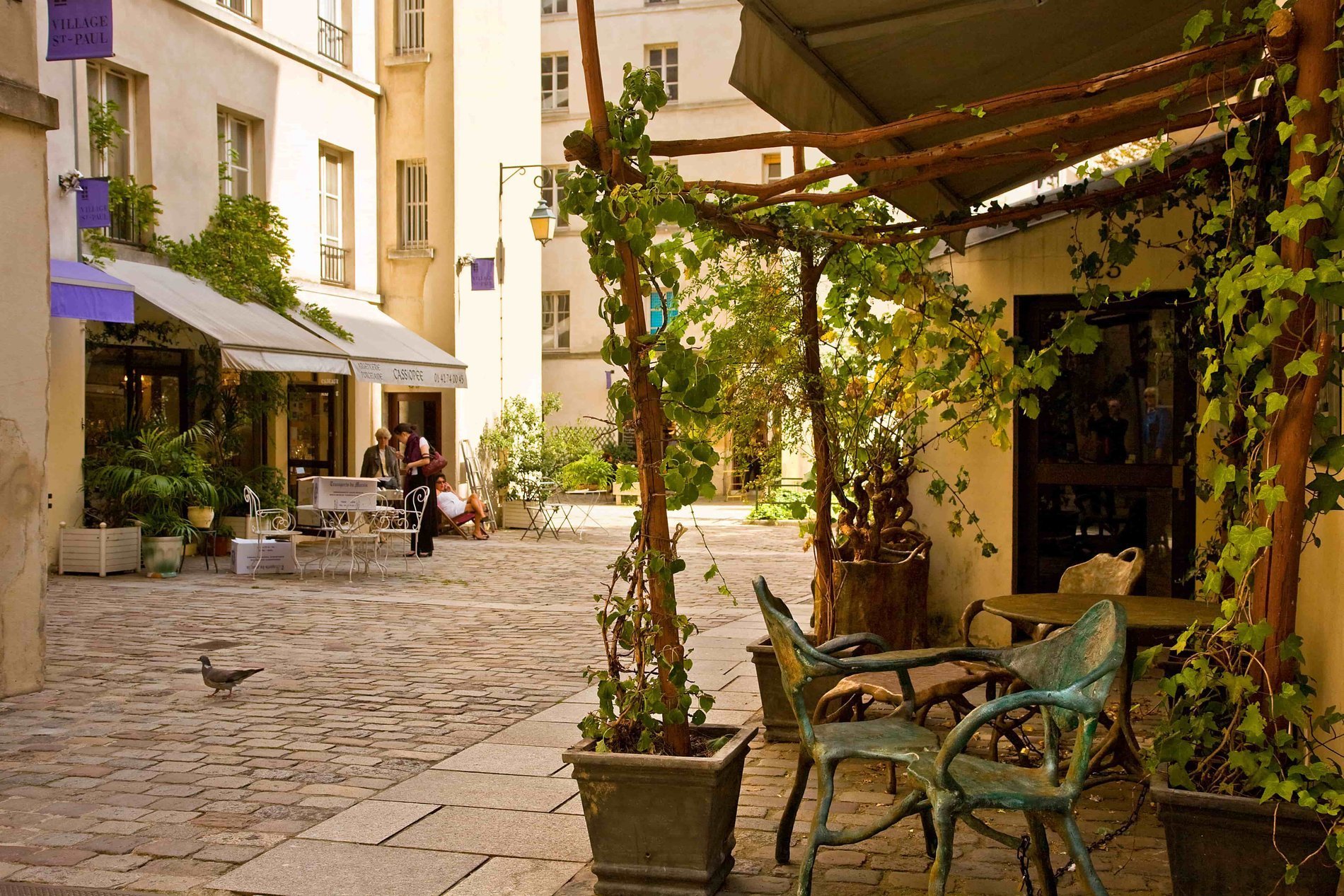Cultural and tourist activities near the Hotel 9Confidentiel
With its ideal location in the heart of the Marais district of Paris, discover the best restaurants and main attractions in the district around the Hotel 9Confidentiel.
Around the Hotel 9Confidentiel
Discover the main attractions
Are you looking to discover the capital's charm and experience life at Paris pace? We have the hotel you need, located in the Paris Marais district.
Restaurants
Recommended restaurants around the Hotel 9Confidentiel
Among the multitude of brasseries, bistros, local bars and down-to-earth restaurants in the Marais district and close to our hotel, we can recommend a wide range of great places to eat.
Place des Vosges
A luxury hotel near Place des Vosges: the 9Confidentiel hotel
Set in one of Paris’ most beautiful districts, the 9Confidentiel hotel combines the comfort of a luxury hotel with an ideal location close to many symbolic Parisian sites, such as the famous Place des Vosges.
Place des Vosges, one of the highlights of Paris
An open-air library for history buffs, an architectural treasure with a thousand and one facets, or quite simply a peace haven brimming with charm… a walk around Place des Vosges will appeal to all sorts of people.
The legacy of a historic square
Place des Vosges was originally named Place Royale: its construction began in 1605, under Henri IV, who wanted to make it one of the King and Queen’s residences and have pavilions there for the wealthy bourgeoisie of the time while creating a place for celebrations and space open to the public. However the king was unable to enjoy it as he passed away a few years before the square opened in 1612.
The square lost its royal name during the period of the French Revolution and it was only under Napoleon that it took the name ‘Place des Vosges’, in tribute to the Department which was the first to pay taxes under the French Revolution.
An aesthetic gem close to Renaissance style
Listed as a historic monument, this square of 140 metres by 140 metres is a real treat for the eyes. The façades are all made from red bricks with limestone blocks and slate roofs. The King’s Pavilion and the Queen’s Pavilion are the only portions that differentiate from the buildings that they overlook.
Place des Vosges is surrounded by archways which today house shops, art galleries and restaurants. The square itself consists of a small park, Louis XIII square, split into four gardens featuring fountains (drawing water from the Ourcq) and separated by paths. In the centre an equestrian statue represents the monarch on his charger.
Hidden corners to explore and unusual stories
Besides its charming setting, favourable for walks or relaxing in the shade of one of the many linden or chestnut trees adorning the square, Place des Vosges is full of surprises and mysteries to discover.
The oldest graffiti in Paris
A surprising fact is that the oldest graffiti in Paris is found on one of the columns of Place des Vosges. It is attributed to the writer Restif de la Bretonne (nicknamed ‘Le Griffon’), who engraved it in 1764. A typographer and urban explorer, he was in the habit of writing words, dates or thoughts as he took his walks around Paris. The only one remaining today is this inscription on pillar no.11 of Place des Vosges with the message: ’1764 NICOLA’.
Home to many famous names
Many contemporary pubic figures live or have lived on the beautiful Place des Vosges such as Dominique Strauss-Kahn and Jack Lang. But if we go further back we find that no.1 bis was the birthplace of Madame de Sévigné; Bossuet a lodger at no.17; no.21 was the residence of Cardinal Richelieu; and Victor Hugo lived at no.6 which has now been converted into a museum. The entrance of Hotel de Sully at no.7 is a must-see.
Practical information: 9Confidentiel luxury hotel close to Place des Vosges
Place des Vosges - 75004 PARIS Metro: Bastille Bus: 29, 69, 76, 96
From the luxury 9Confidentiel hotel near Place des Vosges, also think about visiting the Paris Picasso Museum, the Carnavalet Museum, the Maison de Victor Hugo, or Rue des Rosiers.
Eglise Saint-Paul
Looking for a hotel near Eglise Saint-Paul, in Paris’ Le Marais district? Book a premium and luxury hotel which will give you all the comfort and wellness you need to make the most of your stay in the heart of the capital. Just a few minutes’ walk from Eglise Saint-Paul, you will have plenty of time to visit this fascinating place of worship and explore Le Marais with its numerous treasures and hidden corners.
Discover Eglise Saint-Paul and its fascinating architecture
The construction of this unique church which bears the mark of the Jesuits, began in 1627 on the order of King Louis XIII. The first mass was held by Cardinal Richelieu in 1641 in the presence of the royal family. This says a lot about the importance of this church which was for a long time one of the capital’s most important places of worship.
Eglise Saint-Paul is the work of three men: Etienne Martellange, who drew up the plans and led the work, François Derand, who was in charge of the façade and the dome, and Charles Turmel, who was responsible for the interior décor. With its shape allowing light to enter through the top and the paintings by Paul de Lapparent, the dome over the church has a distinctive architectural character, the first creation of this type in France and still one of the few to exist today. This type of dome became the architectural mark of Jesuit churches. This dome, reminiscent of the one in Florence, is also testimony to the Italian influence in the high Renaissance period. Three statues can also be seen on the façade. Saint Aure and Saint Catherine are on the second level while Saint Louis is on the third level. You can also admire the wonderful clock face from Saint-Paul-des-Champs church which was destroyed in 1799.
As you enter this place of worship, you will notice many decorative items with an abundance of gold, paintings and statues adorning this church.
Many traces of history within Eglise Saint-Paul
The hearts of Louis XIII and Louis XIV were kept in this royal church until the Revolution. Although the revolutionaries did not touch the crypt—which is not open to the public—it is said that at this time the hearts of the two kings were stolen and used to make red paint.
Yet, historical fact shows that under the Revolution, Eglise Saint-Paul became a book depository and was renamed the ‘Temple of Reason’. It was only under the Concordat of 1801 that the building was given to the Church.
In 1843, Victor Hugo, who lived just a few metres away on Place des Vosges, married his wife Léopoldine at Eglise Saint-Paul. To celebrate and honour this event, he gave the church two fonts which are still present at this site.
It is a historic relic no doubt more surprising than any other as it is so rare to find something like this in a church. You will also notice graffiti from May 1871, at the end of the Paris Commune, which reads ‘La République Française ou la mort’ [The French Republic or death].
By choosing a hotel near Eglise Saint-Paul in Le Marais, you can be sure to make the most of this district which has always held a great importance in the history and the appeal of Paris.
Hôtel de Sully - private mansions
A luxury hotel near Hôtel de Sully and private mansions in Le Marais, Paris
Immerse yourself in the heart of the capital by staying in a hotel near Hôtel de Sully and the private mansions of Le Marais.
Discover the authentic charm of 17th-century Paris on your trip to the French capital. Le Marais is full of spectacular buildings with large double doors very often concealing magnificent gardens. These private mansions now stand alongside hipster boutiques and trendy coffee shops. This combination of old luxury and resolutely modern chic is what makes Le Marais unique and gives it its appeal.
Discover the famous Hôtel de Sully, rue Saint-Antoine
You will find the Hôtel de Sully at 62 Rue Saint-Antoine. This magnificent private mansion was built on the order of Henri IV with construction beginning in 1625. The Duke of Sully took ownership of it in 1634 and it remained in the family until the 18th century. The duchess, Charlotte Séguier, is the most famous lady of the house. Her first marriage was to the Duke of Sully until his death after which she married Henri de Verneuil, thereby becoming aunt to Louis XIV. This private mansion is remarkable for its baroque architecture brimming with classical décor and architectural detail, particularly representations of Greek goddesses.
For a long time, it remained in the high spheres of nobility with many prestigious guests visiting such as Countess de Sévigné and Voltaire.
Purchased by the State in 1945, Hôtel de Sully became the Centre of National Monuments in the 1970s.
The many private mansions of Le Marais
The many private mansions of Le Marais mostly date from the 17th century when aristocrats and wealthy intellectuals resides in them. While they differ from each other in their size and decor, these private mansions were all built on the same model. Behind large double doors, first there is a courtyard to keep the horse-drawn coaches, a palace often built with arcades and, behind the walls, a French style garden.
If this tickles your fancy, you won’t have any trouble finding many architectural gems, relics of a historic Paris. Don’t miss Hôtel de Beauvais on Rue François Miron where the illustrious Mozart once resided. This palace, now Paris’ administrative court of appeal, has a very unusual architectural shape. Not many private mansions are built in a circular shape like this with interior colonnades. Built in 1655, the wrought iron balconies were also very new for the time.
Hôtel d’Ecquevilly on Rue de Turenne is worth a visit, especially for the magnificent Saint-Gilles Grand Veneur garden behind it. The roses which give the garden its fragrance in summer are an invitation to tranquility. A wonderful respite right in the city centre!
Finally, the famous Hôtel de Carnavalet is one of the must-see private mansions in the district. Open to the public, , it houses the museum of the history of Paris and entry is free.
A hotel near Hôtel de Sully and the private mansions of Le Marais is therefore an ideal starting point to explore the magnificent 17th-century Paris.
Rue des Rosiers
A hotel in Le Marais (Paris) near Rue des Rosiers: Hotel 9Confidentiel
We love the animated quarter, its shops, history, and beauty: Rue des Rosiers, an unavoidable street in the Le Marais quarter of Paris, is very easily accessible from theHotel 9Confidentiel.
Le Marais, the historical Jewish quarter of Paris
Rue des Rosiers, and more generally, the Le Marais quarter comprise the historically Jewish Quarter of Paris (also called Pletzl). It was during the nineteenth century that the Le Marais quarter welcomed an important wave of Jewish immigration, following the persecutions and anti-Semitism in Central and Eastern Europe. Even if the Jewish community is less represented today than in former times, due to gentrification, the footprint of the community remains, as do various incarnate details of Jewish culture: synagogues dotting the streets of the quarter, an active Yeshiva (center for studying the Torah), a hammam of Saint Paul reconstructed into a luxury boutique (at 4 Rue des Rosiers), Hebrew inscriptions here and there, specialized Yiddish delicatessens, and of course, a famous Holocaust memorial (Museum and Documentation Center).
Architecture to admire
Rue des Rosiers is equally known for the beauty of its buildings, none being of the Haussman style, a distinction in comparison to the numerous quarters in Paris. Most of the old mansions in the quarter have been transformed into museums. In 1962 André Malraux, the Minister of Culture at the time, placed Rue des Rosiers under protection to preserve the character and splendor. In 2005-2007, the quarter changed dramatically with a decision to pave and pedestrianize the streets. The decision provoked controversy as some feared the soul of the quarter would be distorted.
Some places to visit on Rue des Rosiers
The yellow shop of Sacha Finkelsztajn at 27 Rue des Rosiers, is a gastronomic landmark for savoring Yiddish cuisine, ranging from platters of pickled herring to Apfelstrüdel (a delicious pastry of apples and cinnamon). For fans of salty dishes, the Falafel Ace, at 32-34 Rue des Rosiers is a genuine establishment where crowds cease to gather from opening until close (closed Tuesdays and Wednesdays). In addition to the outlets of Yiddish cuisine, one can find numerous shops: Diasporama (souvenirs, bookstore) at 20 Rue des Rosiers ; Art 25 (Art Gallery), at 25 Rue des Rosiers; etc.
Practical Information: Hotel 9Confidentiel near Rue des Rosiers in Le Marais, Paris
Located in between the 3rd and 4th districts in Paris, the Le Marais quarter, andHotel 9Confidentiel are near Rue des Rosiers. Metro : Saint Paul (line 1), Hôtel de Ville (lignes 1 and 11) Since the luxury Hotel 9Confidentiel is near Rue des Rosiers, do not forget to visit Place des Vosges, Rue de Rivoli, the Centre Beaubourg Pompidou or l’Hôtel de Ville.
Beaubourg Centre Georges Pompidou
A trendy hotel near Beaubourg - Pompidou Centre: the 9Confidentiel hotel
Fans of contemporary art visiting Paris will love the 9Confidentiel hotel, a trendy hotel very near Beaubourg - Pompidou Centre - or officially: Georges-Pompidou National Centre of Art and Culture-, a world-famous cultural institution.
History of the Pompidou Centre (Beaubourg)
The Beaubourg Centre came from the initiative of Georges Pompidou, President of France from 1969 to 1974. As an art lover, he wanted to showcase contemporary art and create a Mecca for culture in Paris so he organised a competition for architects from all over the world. The design of Renzo Piano, Gianfranco Franchini and Richard Rogers (two Italians and an Englishman) were selected out of 681 candidates from 49 countries. Work began in 1971 and took five years to complete. The Centre was opened on January 31st, 1977 by the president at the time, Valéry Giscard d’Estaing, the prime minister, Raymond Barre, and the secretary of state for culture, François Giroud. Georges Pompidou did not live to see the completion of his project as he passed away in 1974. Although controversial for its eccentric architecture, the centre has been a success and quickly became a Parisian tourist attraction. Between 1997 and 2000 a new wave of construction was carried out to renovate the building. As a popular tourist attraction, the centre welcomed 3.3 million visitors in 2016.
Beaubourg: symbolic architecture
The Pompidou Centre measures 166 metres long, 42 metres high and 60 metres wide. Inside are 5 levels of 7,500m² with a total area of 103,300m², of which 45,000m² is accessible to the public. Its urban and industrial character is primarily due to the materials used during its construction such as steel, glass and reinforced concrete, but also due to the characteristics of the building such as the exterior escalator, metallic framework and big colourful pipes surrounding the structure. The colours of the pipes vary according to their purpose: blue pipes for air (air conditioning), green pipes for water, yellow pipes for energy (electricity), and red pipes for various circulation elements (lifts, galleries, etc.).
Collections and events
The National Museum of Modern Art collection is split into two spaces: the modern period (1905-1960), with notable works by Matisse and Picasso; and the contemporary period (from 1960 to present) which showcases artists such as Andy Warhol and Niki de Saint Phalle. On the top floor are temporary exhibitions of international renown and a panoramic view over the centre of Paris. As well as these collections, the Pompidou Centre hosts different events such as the Festival Hors Pistes and the International Documentary Film Festival.
Composition of the Pompidou Centre
In addition to its modern art museum, Beaubourg has several cultural spaces, such as theatres and cinemas, an industrial design centre and the Public Information Library (BPI). With 2,200 seats, an area of 10,400m² and a collection of nearly 380,000 freely accessible documents, the Pompidou Centre’s BPI is the premier public reading library in Europe.
Practical information:
Museum hours
11am to 9pm every day except Tuesdays.
Entrance to the Museum is free for everyone on the first Sunday of the month.BPI Opening Times
11am to 10pm Saturday, Sunday, and bank holidays.
12pm to 10pm Monday, Wednesday, Thursday, and Friday.Access
Place Georges-Pompidou - 75004 PARIS
Metro: Rambuteau (line 11), Hôtel de Ville (lines 1 and 11)
RER: Châtelet - Les Halles (lines A, B, D)
Bus: lines 29, 38, 47, 75
Hôtel de Ville
The designer and comfortable 9Confidentiel hotel is very close to Hôtel de Ville of Paris, one of the capital’s most symbolic monuments.
Hôtel de Ville, a remarkable feat of architecture
Erected for the first time in 1357, Hôtel de Ville of Paris was burned down by the Communards in 1871 and rebuilt in Neo-Renaissance style by the architects Théodore Ballu and Édouard Deperthes. Inside, the Function Room has been designed as the ‘Republican’ copy of the Hall of Mirrors at Versailles. Its main façade is 143 metres long, and its height varies between 18 and 50 metres. These impressive dimensions make it the largest city hall in Europe.
Famous figures on the façade of the Hôtel de Ville
The first construction of the Hôtel de Ville under Louis-Philippe I featured statues of illustrious Parisian figures. After it was destroyed and rebuilt, some of the figures were replaced. Today it features:
- the politician Alexandre Ledru-Rollin (ground floor of the left corner pavilion, main façade)
- the playwright Molière (ground floor of the central part of the main façade)
- the philosopher, chemist and economist Antoine Lavoisier (ground floor to the right of the central part on the main façade)
- the writer Voltaire (as above)
- the letter writer Madame de Sévigné (ground floor of the left pavilion, on the façade on the Seine side)
- the author and letter writer George Sand (ground floor, rear of the left pavilion, on the façade on the Seine side)
- the poet and playwright Alfred de Musset (first floor of the right pavilion, on the façade on the Seine side)
- the painter Eugène Delacroix (as above)
- the writer François de la Rochefoucauld (second floor of the right pavilion, on the façade on the Seine side)
Practical information:
Hôtel de Ville of Paris, near our 9Confidentiel hotel, houses the municipal institutions of the city of Paris, and also offers free guided tours if you sign up via the Public Relations department for the City of Paris. Tours include the reception rooms (Salon des Arcades, Salon Jean-Paul Laurens, Salon Bertrand, Salle des Fêtes), the Staircase of Honour and the Salle du Conseil. Tours are in French, English or German. It is a good idea to book your tour two months in advance by contacting: visites.hdv@paris.fr. Tours take place Monday to Saturday from 10am to 7pm.
The square of the Hôtel de Ville regularly hosts cultural events and concerts
Metro stations: Hôtel de Ville (line 1, line 11) RER A and B: Châtelet - Les Halles Bus no. 38, 67, 69, 74, 75, 76, 96
From Paris’ Hôtel de Ville, near the 9Confidentiel, also think about visiting Rue de Rivoli, Rue des Rosiers, Place des Vosges or the Pompidou Centre.
Rue de Rivoli
A unique hotel near Rue de Rivoli: 9Confidentiel hotel
In the heart of the capital, the unique 9Confidentiel hotel will give you easy access to the most beautiful and lively places in Paris, such as the famous Rue de Rivoli.
A symbolic street of Paris
Rue de Rivoli takes its name from the victory of Napoleon Bonaparte over Austria in 1797. This perfectly straight road connects Place de la Concorde and Rue Saint-Antoine and is one of Paris’ longest streets at over 3km. Construction began in 1802, during the time of the First Empire under Napoleon Bonaparte, but was not completed until 1855 under Napoleon III which explains the contrast of architectural styles. The first segment of the street is lined with arcades, initially designed so citizens could walk sheltered from the rain, whereas the other part of the street displays a touch of Haussmann architecture.
Take a stroll down Rue de Rivoli
A must-see for visitors to Paris, Rue de Rivoli is also an important place for Parisians, due to its central location and proximity to many symbolic Parisian sites but also because it’s a lively and busy shopping street with souvenir shops and luxury boutiques side by side.
Starting at 29 Rue de Rivoli, you will find the Hôtel de Ville of Paris, an impressive Renaissance-style monument, 143 metres long and between 18 and 50 metres in height.
Just opposite, from number 52 to 64 is the symbolic department store BHV, formerly known as the ‘Grand Bazaar of the Hôtel de Ville’.
Fans of street art will want to stop at number 59 to visit 59 Rivoli: formerly an artists’ squat, today it flourishes as an artists’ residence spreading over 6 floors and giving a glimpse into a variety of different artistic styles and worlds.
A bit further along, from number 67 to 83, admire the shops of La Samaritaine in Art Nouveau style; once Paris’ biggest stores, the building has been undergoing restructuring since 2005.
Finally, what would Rue de Rivoli be without the Louvre Palace stretching from number 99 to 107 and the Tuileries Garden. With over 8 million visitors every year coming to see its collections of over 550,000 works, the Louvre is the most visited museum in the world. The Tuileries Garden spreads over more than 25 hectares making it the largest French garden in Paris.
Practical information:
Metro: Louvre-Rivoli (line 1), Concorde (line 8, line 12), Palais-Royal, Musée du Louvre (line 7)
Bus: Musée du Louvre (line 27), Louvre-Rivoli (line 69 and 72), Pont-Neuf (line 75), Louvre-Etienne Marcel (line 29), Rivoli-Pont Neuf (line 76).
From our 9Confidentiel hotel, near Rue de Rivoli, plan to visit the Louvre Museum, Place des Vosges, and Rue des Rosiers.
Place du marché Sainte-Catherine
Choose a hotel near Place du Marché Sainte-Catherine so you can enjoy the peace and quiet of this hidden typically Parisian little square throughout your stay. Built in 1784 by the architect Louis Caron, Place du Marché Sainte-Catherine appeals without fail to both Parisians passing through and those native to to the district. It is rare to find places that enjoy universal approval like this.
The discreet charm of Place du Marché Sainte-Catherine
Initially designed to host the Rue Saint-Antoine market, this square was built on the former Sainte-Catherine convent. Typical of Le Marais, it is now lined with terraces of restaurants and cafés which are always busy no matter the weather or the season. A bit of rain would not stop Parisians from enjoying their coffee outdoors!
This hidden square of Le Marais with its village atmosphere can be accessed via Rue Caron, perpendicular to Rue Saint-Antoine. A timeless place where everyone can enjoy a bit of calm and greenery, Place du Marché Sainte-Catherine - almost entirely pedestrianised - is lined with Chinese mulberry trees which cast a poetic shadow over the public benches.
This enchanting square could not leave anyone feeling indifferent and many film directors have chosen to shoot scenes here. Place du Marché Sainte-Catherine can be spotted in Guillaume Canet’s Little White Lies and in The Bourne Identity starring Matt Damon.
With the square being near the district’s main attractions, you can enjoy a well-deserved break before continuing to explore Le Marais.
Do you know other secret places in Le Marais?
It’s not always easy to find a place to stop for a break in Paris although many parks do exist. If you go up Rue des Francs-Bourgeois, you will reach Rue des Blancs Manteaux. At street address number 6 you will find a little family park frequented by all generations. You will see people playing table tennis, chatting on a bench, sunbathing with friends, etc.
The splendid Rosiers-Joseph Migneret Garden is also a peace haven not to be missed when taking a stroll through Le Marais. It can be accessed at 10 of Rue des Rosiers. Surrounded by three private mansions, you can make use of the 2,000m2 grassy area. A charming garden right in the city centre, ‘Les Jardiniers du 4ème’ (4th arrondissement gardeners) have created a shared garden here.
To find something to eat in an effervescent atmosphere, don’t forget to take a look around the Marché des Enfants Rouges. Tourists and residents of the district swear by this market with its mix of mouth-watering smells coming from the different stalls. Finally, in the heart of Le Marais is one of Paris’ most beautiful secret passages. Go and explore the Passage de l’Ancre. When you push open the blue door at 223 Rue Saint-Martin, you will find a delightful little paved passage lined with colourful displays. Welcome to a secret part of Paris.
Our exceptional hotel is a stone’s throw from Place du Marché Sainte-Catherine, the ideal choice if you’re looking for a nice place in typical Paris: surrounded in authentic French charm—a theatre for an unforgettable stay.
Village Saint Paul
Enjoy your stay in Paris the best possible way by choosing a 4-star hotel near Village Saint-Paul, in the heart of Le Marais. Ideally located, you will find all the comfort you need just a few steps from the Hôtel de Ville and the Île de la Cité. A charming hotel where you can recharge your battery before wandering the delightful streets of the typical and lively district of Le Marais.
Village Saint-Paul, a special place in Paris
As you explore you will discover Village Saint-Paul whose reputation speaks for itself. This timeless corner was built outside of the city in the 7th century. Although it was originally a women’s monastery, the distinctive character of this place so appealed to Charles V in the 14th century that he decided to make it his main residence.
Following Charles V’s decision, Village Saint-Paul would become the parish of the Kings of France until the 16th century.
Village Saint-Paul’s existence has been very different however since the completion of its renovation in 1979. Located between the famous Rue Saint-Antoine and the Seine, this exceptional urban entity delights both tourists and Parisians! By choosing a hotel near Village Saint-Paul, you will have plenty of time to wander around this area and make great discoveries.
You will find charming works of art to give as gifts or to enjoy yourself, enjoy a moment away from the hustle and bustle right in the city centre and take the time to sip a drink sitting on a terrace and admire the Parisian art de vivre.
Village Saint Paul, a meeting place for different styles
Village Saint-Paul is an eclectic collection of some 80 shops mainly based around the world of decoration: from flea markets and antiques to designer items and crafts. Shops selling antique photos can be found alongside a stall specialising in Scandinavian style, a gallery of Brazilian design but also a photo gallery founded by Valérie-Anne Giscard d’Estaing, daughter of the third president of the 5th Republic. Like antiques? You are sure to find some great items at Otemps’tik with its specialised selection of industrial furniture and ecological approach. You will also enjoy the sounds and smells of an old school in the little shop Au Petit Bonheur la Chance. You will no doubt unearth some treasures which will delight school kids... and big kids! A store specialising in inventions - each more surprising than the last - rugs, ceramics from around the world, semi-precious stones, art galleries, there’s something for everyone.
In Village Saint-Paul you will find multiple different styles side by side all coming together to form a good representation of Paris’ diversity.
A hotel near Village Saint-Paul is therefore a great choice for anyone looking for authenticity, fans of the charming Parisian life and those wishing to enjoy the city’s tourist attractions while staying in a luxury hotel.
Rue des Francs-Bourgeois
The ideal street for exploring the real Le Marais district
Fans of fashion, luxury and design looking for true Parisian authenticity? Choose to stay in a hotel near Rue des Francs-Bourgeois, Paris Marais. Our 4 star hotel will meet all your needs and allow you to make the most of Le Marais and the famous Rue des Francs-Bourgeois which connects Place des Vosges and Rue des Archives! All along this major artery of Le Marais, you will find multiple architectural and historic gems as well as stores which will delight shopaholics.
Explore the historic treasures of Rue des Francs-Bourgeois
Rue des Francs-Bourgeois starts at Place des Vosges, the famous Parisian square, called Place Royale up until 1800. This very characteristic square is the oldest in the capital. This symbolic square of Le Marais district has been home to many well-known figures such as Madame de Sévigné and Victor Hugo. Visit the museum devoted to the famous writer set in Hugo's former apartment. As you go up the street you will pass many private mansions which give Paris and Le Marais a distinctive character. You can visit the Carnavalet Museum, dedicated to the History of Paris and enjoy its wonderful French garden. Also see the oldest fire station in Paris, designed by François Mansart, architect of Louis XIV who participated in constructing Versailles. If you visit on 13th and 14th of July, you will be able to attend the ball which is held there for the National Holiday. On the corner of Rue des Archives stands the Hôtel de Soubise which is now the headquarters of the National Archives. The interior garden is worth a look.
Rue des Francs-Bourgeois, temple of fashion and Parisian chic
Rue des Francs-Bourgeois has much more to offer however than just impressive architecture. It has become one of the most highly valued streets for fans of fashion and shopping. There are many boutiques devoted to timeless Parisian chic style or to the art of perfumery all along this route through the heart of Le Marais. You will find big brands with proven reputation as well as small, refined and sophisticated companies. Home decor, perfumes, cosmetics, fashion, even stationery: you will easily find what you like and be able to visit many great places as you wander along this legendary street of Paris.
Choosing a hotel near Rue des Francs-Bourgeois, in Paris’ Le Marais district, allows you to make the most of all of Paris’ charms. Stop to get your breath back in one of the street’s many cafés or even go for an evening drink and enjoy the Parisian nightlife. Our premium hotel will be a perfect haven where you can relax. As you return from your activities don’t hesitate to enjoy a tea at 9Confidentiel or sip cocktails at our bar Le Confidence .
Restaurants in Le Marais
The restaurants where one can spend a magical evening in Paris’ Le Marais district
Le Marais is a lively district where you can easily find a charming and welcoming restaurant. Some places particularly stand out due to the quality of the cuisine offered or the décor of the restaurant. A quick tour of Le Marais’ best restaurants is within easy reach of our exceptional hotel.
L’Ambroisie, 9 place des Vosges 75004 Paris
As its name indicates, the most refined palates will enjoy L’Ambroisie, which means “food of the Gods” in ancient Greek. Since 1986, the chef here, Bernard Pacaud, has offered high-class and creative French cuisine. With three Michelin stars, this restaurant on Place des Vosges is the ideal setting for a unique evening. Crystal chandeliers, silverware and wall tapestries provide the decor for sublime cuisine with a careful balance between classic and imaginative dishes.
Bel Canto, 72 quai de l’Hôtel de Ville 74004 Paris
Enjoy a magical evening in an unusual restaurant. Bel Canto offers an exceptional experience combining culinary pleasure and musical delights. Can you imagine anything more French than an evening at the opera paired with fine dining? A quartet of opera singers, accompanied by a pianist, performs famous pieces every fifteen minutes in the centre of the room: Carmen, The Magic Flute, Don Giovanni, etc. The fare is served with a twist on classic French cuisine: tournedos of hake, herb-crusted rack of lamb or a supreme roast of guinea fowl.
Restaurant H, 13 rue Jean Beausire 75004 Paris
The chef Hubert Duchenne is the mastermind behind Restaurant H, recognised by Gault et Millau among others. A young talent highly regarded in the industry, he began his career alongside Jean-François Piège and Akram Benallal. Designed like an apartment, the restaurant with retro-futuristic decor was designed for diners to feel at ease, like they are at home. In the evenings there is a choice of two menus served with 5 or 7 courses. Each ‘itinerary’ offers dishes with a suggested wine pairing from the house. A revelation!
Tour d’Argent, 17 Quai de la Tournelle 75005 Paris
Just a few minutes from Le Marais, head to this big name of French cuisine: Michelin starred since 1933, Tour d'Argent is an institution that needs no introduction. The exquisite flavours prepared by the chef Philippe Labbé are equalled only by the sublime view of Paris from the restaurant. Classic dishes and original creations, high quality products and a carefully prepared dessert menu: there can’t be any doubt, the Tour d’Argent deserves its reputation.
Eataly Paris Marais: Italian gastronomy takes centre stage
Eataly Paris Marais: Italian gastronomy in the spotlight
Right next door to the Hotel 9Confidentiel in the Marais district, Eataly is much more than an Italian restaurant: it's a veritable universe dedicated to the very best of Italian gastronomy. The concept is to enable visitors to taste, buy or even learn to cook Italian products. The 2,600-square-meter space is divided into several areas dedicated to these different activities, and has been delighting new visitors every day since it opened in 2019. A Mecca of Italian gastronomy, a must-see.
An atypical, innovative restaurant concept
Since Oscar Farinetti created the Eataly brand in 2002, it has been a resounding success, and this innovative restaurant concept has continued to flourish in the four corners of Italy and Europe, before expanding worldwide, with a total of 39 Eataly restaurants today. Eataly Paris Marais was the first complex to open in Paris and France, replacing the former BHV canteen. Its blue storefront, strewn with wicker baskets and designed by Scottish artist Martin Boyce, gives visitors a foretaste of the refined, warm atmosphere that characterizes the interior.
The Italian “Food Court” in the Marais
Organized as a veritable restaurant complex, Eataly Paris Marais offers only authentic products from carefully selected local Italian suppliers. Flavors, colors and smells transport visitors to the heart of pure Italian culture... Among the areas to discover:
- 9 market counters, organized like a real Italian “piazza” (bakery, cheese shop, grocery store, butcher's shop, on-site mozzarella stands, etc.);
- 7 sales and catering outlets, from aperitivo to gourmet restaurant (Il Café, La Gelateria, La Piazza, Pasta e Pizza, etc.);
- A cooking school, to learn how to make fresh pasta, pizzas cooked a la plancha, risottos and lasagne, as well as to cultivate your knowledge of Italian wines;
- A wine cellar with over 1,200 labels, ranging from 6 to 320 euros a bottle.
Practical information, opening hours and access
Address: Eataly Marais - 37 Rue Sainte Croix de la Bretonnerie - Paris 4th arrondissement. The Eataly Paris Marais restaurant complex is easily accessible from the 9Confidentiel hotel in 4 minutes on foot. Opening hours: Il Mercato (market and grocery store): 8:30am - 9pm Bakery: 8:30am - 10pm For restaurant opening hours, visit the Eataly Paris Marais website Eataly Paris Marais. Phone number: 01 83 65 81 00 www.eataly.com



